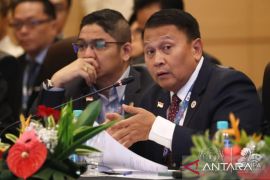The glaring truth here is that illicit drugs have mercilessly eyed all strata and age groups of society: the young and old, the haves and haves-not, as well as ordinary and respected figures.
Despite the imposition of stricter laws by authorities and the drug users being viewed in a negative light, illicit substance abuse continues to hog news headlines and be pervasive in day-to-day talks.
Skeptics believe that the fight against illegal drugs might never reach a logical end. The authorities might be left aggravated and exasperated, but they have no other option but to seek more creative solutions to tackle the issue.
Since 1976, the fight against illicit drugs has become a regional concern, as 10 members of the Association of Southeast Asian Nations (ASEAN) established the ASEAN Drug Experts Meeting. The group’s special body, whose name was changed to ASEAN Senior Officials on Drug Matters (ASOD) in 1984, has targeted the realization of a “Drug-Free ASEAN.”
Under the ASOD, at least four mechanisms were established, followed by two multi-year work plans for the 2009-2015 and 2016-2025 periods. Both work plans outlined different priorities that follow the global and regional trends and outlooks of drug abuse.
In its first work plan on fighting drugs, ASEAN members eyed the priority to halt distribution and disrupt the production of “black gold” or poppy cultivation and other production of illicit substances, such as methamphetamine and marijuana, in Southeast Asia’s Golden Triangle.
Well-concealed in the lush tropical forests near the rivers of Ruak and Mekong, the Golden Triangle, spanning 367 thousand square miles, comprises flat lands overlapped with mountainous terrains where Thailand, Myanmar, and Laos share their borders. Coupled with the land’s high altitude and remote location, the Golden Triangle became the ideal location for the production of illicit drugs that were later distributed to countries in East Asia and South-East Asia as well as Australia.
Hence, since the 1980s, Golden Triangle, where the world's second-largest poppy cultivation takes place, had been the main target of anti-narcotics operations launched by the military in Myanmar and Thailand. Consequently, some of the traffickers, such as the Shan United Army (SUA), “could no longer operate freely in the border area,” the US-intelligent CIA reported in a document disclosed in 2011.
However, SUA was not the sole trafficker and producer of illicit drugs, as the infamous Golden Triangle was also controlled by other ethnic-based insurgent groups, including the 3rd and 5th Chinese Irregular Force (CIF), the Burmese Communist Party (BCP), the Shan State Volunteer Force (SSVF), the Kachin Independence Army (KIA), the Shan State Army (SSA), and the Shan United Revolutionary Army.
Hence, since 1982 until today, military-launched anti-narcotics operations remained the top solution for Myanmar, Thailand, and Laos to dismantle refineries as well as burn poppy and cannabis plantations in some parts of the Golden Triangle.
Joint operation
Despite anti-narcotics operations being launched for decades in the South-East Asian region, the illicit trafficking of drugs kept increasing “due to the reported proliferation of methamphetamine and new psychoactive substances (NPS),” according to the “Drug Free ASEAN 2015: Evaluation and Recommendations Post-2015” report.
The document, reflecting the final assessment of the ASEAN Work Plan 2009-2015 on the fight against illicit drugs, concluded that the ASEAN member states “need a more holistic approach,” especially the ASEAN’s drug agencies and authorities must evolve from the “one-dimensional control approach to a multi-dimensional management approach.”
Related news: Indonesia and Colombia ready to support drug control
Related news: Questioning Malaysia`s commitment to fighting drugs
In light of the recommendations, ASEAN’s Work Plan for the 2016-2015 period set up 26 references that would serve as guidelines to crack down on illicit drugs for the regional body’s member states. The work plan comprised seven sections: general activities; preventive education; law enforcement; treatment and rehabilitation; research; alternative development; and extra-regional cooperation.
For instance, in terms of law enforcement, the eradication of illicit crop cultivation, manufacture, and trafficking remained the top targets of the war against narcotics in the region.
However, the work plan reaffirmed the efforts by prompting ASEAN member states to enhance “cross-border and trans-national law enforcement collaboration, cooperation, and capacity building on drug control, including through air, land, sea, and waterways, such as the Mekong River, without prejudice to freedom of navigation and transportation.”
A series of collaboration through joint researches, anti-narcotic operations, and region-wide campaigns became inevitable for the ASEAN member states, as illicit drug trafficking was part of etrans-national organized crimes that turned the region not only into a home for manufacturing but also a market that offers lucrative profit to dealers and traffickers.
Unprecedented move
Apart from several stricter efforts made against traffickers and dealers in the region, Thailand had softened its stance on cannabis sativa that was largely illegal in nearly all ASEAN member states. In 2018, the Thailand authority passed a bill that allows the use of cannabis for medical purposes and research. Thailand’s unprecedented move might be followed by Malaysia, as this year, the Muslim-majority nation has considered a plan to legalize medical cannabis. The Malaysian authority might allow its citizens to grow their own cannabis plants though necessitating permits from the country's Health Ministry.
Due to the stigma surrounding cannabis, its legalization for medical purposes might never be expected by ASEAN member states, as its work plan on fighting illicit drugs had no references on any marijuana research. Despite the lack of studies on the impacts of cannabis legalization on the illicit trafficking of drugs, ASEAN member states must start questioning whether the growing trend of medical marijuana was a promise or threat to the region. Related news: Uncovered drug cases in Indonesia increase in early 2019: police
Related news: Indonesian Navy foils smuggling attempt of 50 kg meth from Thailand
Related news: 2 women arrested for transporting drugs from Laos to Vietnam
Editor: Gusti Nur Cahya Aryani
Copyright © ANTARA 2019












